The digital landscape offers businesses an array of tools to enhance their online presence and drive growth. Finding the right balance between creating original content and curating existing resources can transform how audiences perceive your brand while maximizing efficiency in your marketing efforts.
Digital tools transforming content curation
Modern businesses face the challenge of consistently producing valuable content while managing limited resources. Digital tools have revolutionized how companies discover, organize, and share content, making it possible to maintain an active online presence without exhausting creative teams.
AI-powered content discovery platforms
Artificial intelligence has changed the content curation game by automating the discovery process. Platforms like Feedly and Curata use machine learning algorithms to identify relevant industry content based on specified parameters. These tools analyze thousands of sources simultaneously, filtering information that aligns with your brand's voice and audience interests. Businesstic technologies integrate seamlessly with these AI solutions, enabling marketers to identify trending topics and thought leadership pieces that resonate with target demographics while maintaining a strategic content mix ratio.
Social listening tools for trending topics
Tracking conversations across digital channels helps brands stay relevant and responsive. Social listening tools monitor mentions, hashtags, and industry discussions, providing real-time insights into what audiences care about. Solutions like BirdAI and Social AI help businesses identify emerging trends before they peak, giving content strategists an edge in planning both original and curated content calendars. The ideal approach follows the recommended 60% original content and 40% curated content distribution, ensuring your brand builds authority while efficiently managing resources through Businesstic's technological solutions and innovative strategies.
Strategic implementation for business expansion
Growing a business in today's digital landscape requires mastering innovative tools and strategies that maximize efficiency while engaging your target audience. Digital transformation has become essential for companies seeking competitive advantages, with content curation emerging as a powerful approach that complements original content creation. When implemented strategically, content curation helps businesses establish thought leadership while optimizing resource allocation.
Businesses across sectors are leveraging curated content to enhance their digital marketing efforts. Studies show over 90% of B2B and 85% of B2C marketers utilize content marketing, with successful SaaS companies like Buffer, HubSpot, Salesforce, and Zendesk demonstrating the effectiveness of balanced content strategies. The optimal content mix ratio according to research is approximately 65% original content, 25% curated content, and 10% syndicated content—though many experts suggest a 60/40 split between original and curated materials.
Measuring content curation ROI
Determining the return on investment for content curation efforts requires tracking specific metrics that align with business objectives. Analytics play a crucial role in evaluating content effectiveness and informing strategic decisions. When measuring content curation ROI, businesses should focus on:
Engagement metrics provide immediate feedback on content resonance. Track metrics like social shares, comments, and time spent on page to gauge audience interest. Rising engagement rates often correlate with increasing brand authority and audience trust—with studies showing over 70% of marketers experiencing enhanced engagement through strategic content curation.
Traffic and conversion metrics reveal how curated content contributes to business growth. Monitor website visitors from curated sources, conversion rates from these visitors, and how they move through your marketing funnel. The SiriusDecisions report indicates 70% of the buying journey occurs without sales assistance, highlighting the importance of strategic content placement.
Resource efficiency calculations demonstrate cost-effectiveness. Compare the time and budget spent on content curation versus original content creation, considering that curation typically requires fewer resources while still delivering value. Tools like Feedly and Curata can streamline the curation process, making it more efficient.
SEO performance indicators reflect long-term benefits. Assess improvements in search rankings, domain authority, and backlink profiles resulting from consistent curation efforts. Curated content attracts quality backlinks when done properly, increasing site authority and improving search visibility.
Integrating curated content into marketing funnels
Successful integration of curated content throughout marketing funnels requires strategic planning and precise execution. At the awareness stage, curated industry news and trends attract potential customers by demonstrating market knowledge. This approach positions your brand as an informed resource while addressing the fact that 77% of adults are online daily, with 26% constantly connected.
During the consideration phase, curated expert opinions and case studies build credibility and trust. Almost 90% of consumers read feedback before making decisions, making third-party perspectives particularly valuable. Complementing original insights with carefully selected external viewpoints creates a comprehensive resource that guides prospects toward your solutions.
Developing an effective integration strategy starts with identifying your audience through detailed buyer personas. This knowledge guides platform selection based on where your target audience spends time online. Next, determine appropriate content types that address specific audience needs at each funnel stage.
A content calendar ensures consistent distribution across channels while maintaining an optimal balance between original and curated materials. This systematic approach prevents content gaps while maximizing resource efficiency. The calendar should account for platform-specific requirements, such as HubSpot's recommendation of posting less than twice daily on Facebook for accounts with under 10,000 followers.
Ethical attribution remains fundamental when integrating curated content. Always provide proper credit to original sources, avoid plagiarism, respect copyright restrictions, and add value through contextual insights. This approach not only maintains legal compliance but also builds industry relationships that can lead to collaborative opportunities.
By strategically implementing content curation alongside original creation, businesses can accelerate growth while establishing industry authority. The combined approach satisfies the modern consumer's demand for valuable, relevant information while optimizing marketing resources for sustainable expansion.

